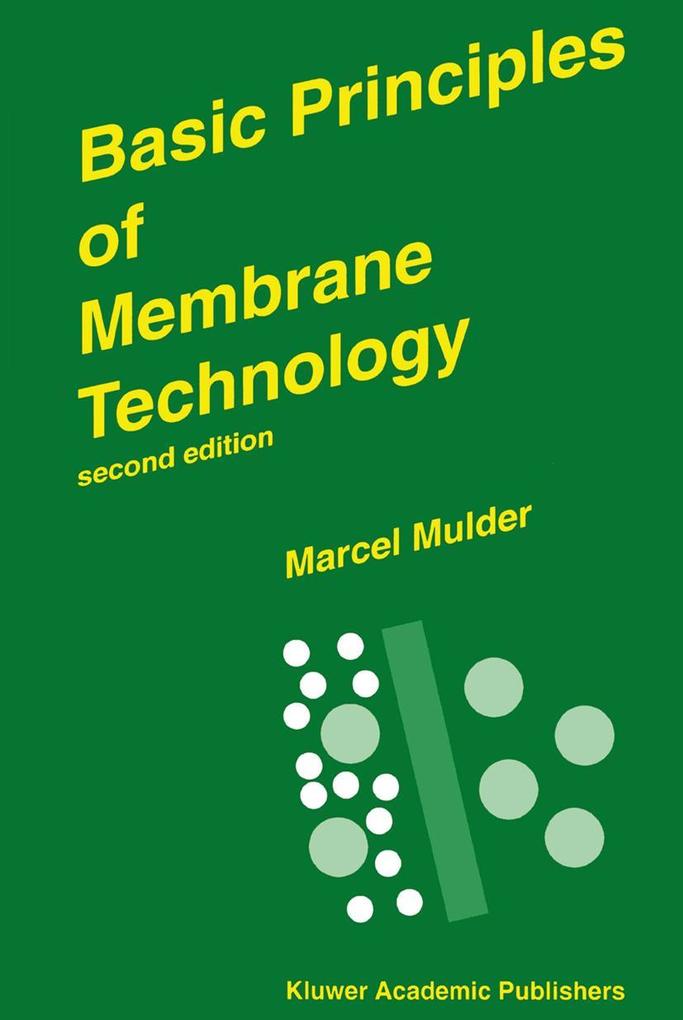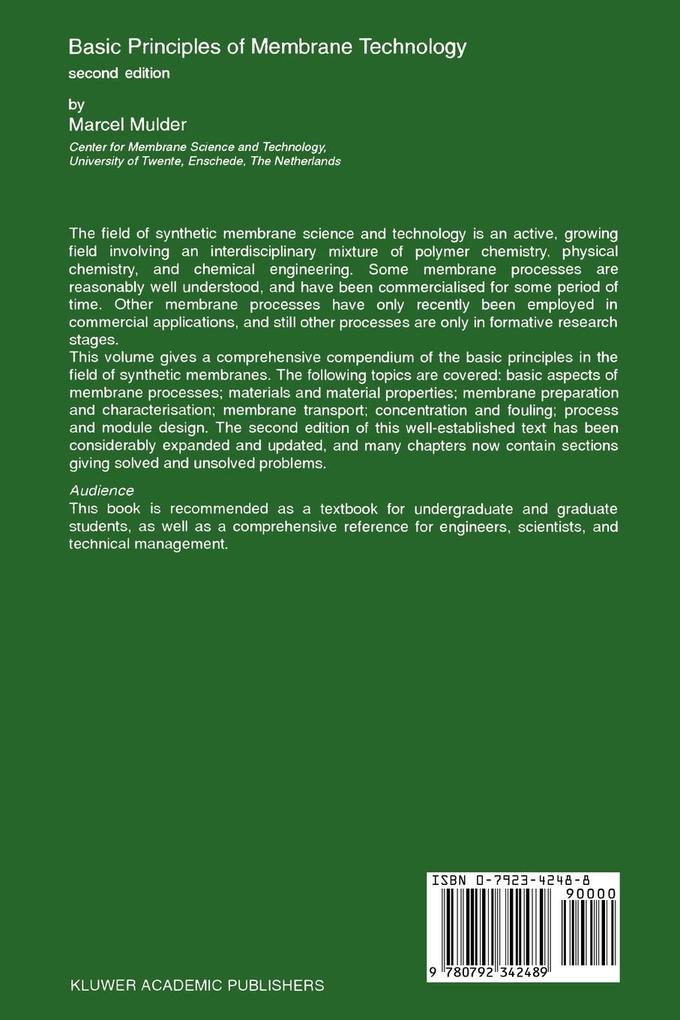III . 2 Preparation of synthetic membranes 72 III . 3 Phase inversion membranes 75 III. 3. 1 Preparation by evaporation 76 III . 3. 2 Precipitation. from the vapour phase 76 III . 3. 3 Precipitation by controlled evaporation 76 Thermal precipitation 76 III . 3. 4 III . 3. 5 Immersion precipitation 77 Preparation techniques for immersion precipitation 77 III . 4 Flat membranes 77 III . 4. 1 78 III . 4. 2 Tubular membranes 81 III . 5 Preparation techniques for composite membranes 82 III. 5. 1 Interfacial polymerisation Dip-coating 83 III . 5. 2 III . 5. 3 Plasma polymerisation 86 III . 5. 4 Modification of homogeneous dense membranes 87 III . 6 Phase separation in polymer systems 89 III . 6. 1 Introduction 89 III . 6. 1. 1 Thermodynamics 89 III . 6. 2 Demixing processes 99 III . 6. 2. 1 Binary mixtures 99 III . 6. 2. 2 Ternary systems 102 III . 6. 3 Crystallisation 104 III . 6. 4 Gelation 106 III . 6. 5 Vitrification 108 III . 6. 6 Thermal precipitation 109 III . 6. 7 Immersion precipitation 110 III . 6. 8 Diffusional aspects 114 III . 6. 9 Mechanism of membrane formation 117 III. 7 Influence of various parameters on membrane morphology 123 III. 7. 1 Choice of solvent-nonsolvent system 123 III . 7. 2 Choice of the polymer 129 III . 7. 3 Polymer concentration 130 III . 7. 4 Composition of the coagulation bath 132 III . 7. 5 Composition of the casting solution 133 III . 7.
Inhaltsverzeichnis
I Introduction. - I. 1 Separation processes. - I. 2 Introduction to membrane processes. - I. 3 History. - I. 4 Definition of a membrane. - I. 5 Membrane processes. - I. 6 Solved problems. - I. 7 Unsolved problems. - I. 8 Literature. - II Materials and material properties. - II. 1 Introduction. - II. 2 Polymers. - II. 3 Stereoisomerism. - II. 4 Chain flexibility. - II. 5 Molecular weight. - II. 6 Chain interactions. - II. 7 State of the polymer. - II. 8 Effect of polymeric structure on Tg. - II. 9 Glass transition temperature depression. - II. 10 Thermal and chemical stability. - II. 11 Mechanical properties. - II. 12 Elastomers. - II. 13 Thermoplastic elastomers. - II. 14 Polyelectrolytes. - II. 15 Polymer blends. - II. 16 Membrane polymers. - II. 17 Inorganic membranes. - II. 18 Biological membranes. - II. 19 Solved problems. - II. 20 Unsolved problems. - II. 21 Literature. - III Preparation of synthetic membranes. - III. 1 Introduction. - III. 2 Preparation of synthetic membranes. - III. 3 Phase inversion membranes. -III. 4 Preparation techniques for immersion precipitation. - III. 5 Preparation techniques for composite membranes. - III. 6 Phase separation in polymer systems. - III. 7 Influence of various parameters on membrane morphology. - III. 8 Inorganic membranes. - III. 9 Solved problems. - III. 10 Unsolved problems. - III. 11 Literature. - IV Characterisation of membranes. - IV. 1 Introduction. - IV. 2 Membrane characterization. - IV. 3 Characterisation of porous membranes. - IV. 4 Characterisation of ionic membranes. - IV. 5 Characterisation of nonporous membranes. - IV. 6 Solved problems. - IV. 7 Unsolved problems. - IV. 8 Literature. - V Transport in membranes. - V. 1 Introduction. - V. 2 Driving forces. - V. 3 Nonequilibrium thermodynamics. - V. 4 Transport through porous membranes. - V. 5 Transport through nonporous membranes. - V. 6 Transport through membranes. A unified approach. - V. 7 Transport in ion-exchange membranes. - V. 8 Solved problems. - V. 9 Unsolved problems. - V. 8 Literature. - VI Membrane processes. -VI. 1 Introduction. - VI. 2 Osmosis. - VI. 3 Pressure driven membrane processes. - VI. 4 Concentration as driving force. - VI. 5 Thermally driven membrane processes. - VI. 6 Membrane contactors. - VI. 7 Electrically driven membrane processes. - VI. 8 Membrane reactors and membrane bioreactors. - VI. 9 Solved problems. - VI. 10 Unsolved problems. - VI. 11 Literature. - VII Polarisation phenomena and fouling. - VII. 1 Introduction. - VII. 2 Concentration polarisation. - VII. 3 Turbulence promoters. - VII. 4 Pressure drop. - VII. 5 Characteristic flux behaviour in pressure driven membrane operations. - VII. 6 Gel layer model. - VII. 7 Osmotic pressure model. - VII. 8 Boundary layer resistance model. - VII. 9 Concentration polarisation in diffusive membrane separations. - VII. 10 Concentration polarisation in electrodialysis. - VII. 11 Temperature polarization. - VII. 12 Membrane fouling. - VII. 13 Methods to reduce fouling. - VII. 14 Compaction. - VII. 15 Solved problems. - VII. 16 Unsolved problems. - VII. 17 Literature. - VIII Module and process design. - VIII. 1 Introduction. - VIII. 2 Plate-and-frame model. - VIII. 3 Spiral wound module. - VIII. 4 Tubular module. - VIII. 5 Capillary module. - VIII. 6 Hollow fiber module. - VIII. 7 Comparison of the module configurations. - VIII. 8 System design. - VIII. 9 Cross-flow operations. - VIII. 10 Hybrid dead-end/cross flow system. - VIII. 11 Cascade operations. - VIII. 12 Some examples of system design. - VIII. 13 Process parameters. - VIII. 14 Reverse osmosis. - VIII. 15 Diafiltration. - VIII. 16 Gas separation and vapour permeation. - VIII. 17 Pervaporation. - VIII. 18 Pervaporation. - VIII. 19 Dialysis. - VIII. 20 Energy requirements. - VIII. 21 Solved problems. - VIII. 22 Unsolved problems. - VIII. 23 Literature. - Appendix 1. - Appendix 2. - Answers to exercises: solved problems. - Answers to exercises: unsolved problems. - List of symbols.











